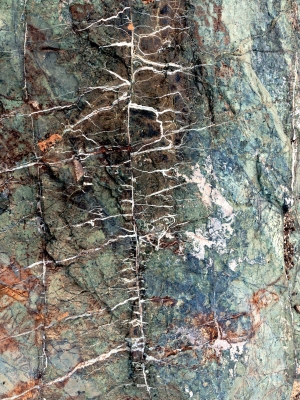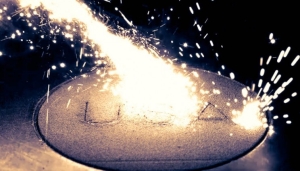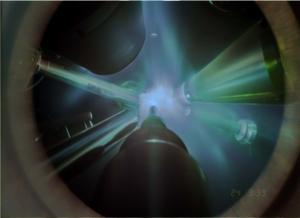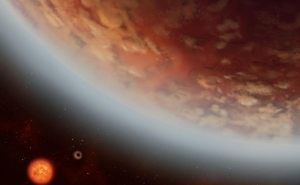LAB REPORT
Science and Technology Making Headlines
May 4, 2018


In Oman, carbonate veins form when water containing dissolved carbon dioxide flows through these rocks.
Rockin’ to help save the planet
The rocks in Oman remove planet-warming carbon dioxide from the air and turn it to stone. In theory, these rocks could store hundreds of years of human emissions of CO2.
The outcrops and craggy ridges are more than just scenery. Some of these rocks are hard at work, naturally reacting with carbon dioxide from the atmosphere and turning it into stone.
Scientists say that if this natural process called carbon mineralization could be harnessed, accelerated and applied inexpensively on a huge scale, it could help fight climate change. Rocks could remove some of the billions of tons of heat-trapping carbon dioxide that humans have pumped into the air since the beginning of the Industrial Age.
“It’s clear that we’re going to have to remove carbon dioxide from the atmosphere,” said Roger Aines, who leads the development of carbon management technologies at Lawrence Livermore National Laboratory. “And we’re going to have to do it on a gigaton scale.”


High-speed images of a common laser-based metal 3D printing process.
In ship shape
When a warship breaks down, the Navy needs to get it running again right away. The Navy’s fleet is aging, with ships dating back decades. Many of the parts that make up these vessels are so old that substitutes are no longer manufactured, and replacement parts must be custom-designed.
A new GE Global Research program in partnership with Lawrence Livermore is developing ways to scan and 3D-print replacement parts out of metal melted with lasers, to get them back to the ship as quickly as possible.
GE is already printing fuel nozzles for jet engines, gas turbines and other components. But the new research program is looking to embed new sensors in the process that can monitor the part as each metal layer takes shape, speeding up production.
This type of 3D printing, or additive manufacturing, uses a metal powder laid on a flat plate. With a powerful laser, the machine quickly melts the powder one small section at a time. As the powder melts into the correct shape, the machine deposits another layer of powder, corresponding to the geometry of the part.

A request for proposals has gone out for the next generation of high-performance computers.
A quantum leap
The Department of Energy’s national labs have provided scientific and technical capabilities essential for national security and competitiveness, including global leadership in supercomputing.
When the nation agreed to stop underground testing of nuclear weapons, DOE's supercomputers provided the precise and sophisticated simulations necessary to ensure the arsenal's ongoing effectiveness.
These computers are getting bigger and better and the next frontier is exascale. DOE recently announced a request for proposals, worth up to $1.8 billion, for development of two to three exascale machines. Exascale computers have speeds of l billion-billion calculations per second, an order of magnitude faster than today's machines. One of those exascale machines will be housed at Lawrence Livermore.


Time-integrated image of a laser-driven shock compression experiment to recreate planetary interior conditions and study the properties of superionic water. Image by M. Millot/E. Kowaluk/J.Wickboldt/LLNL/LLE/NIF
Ice is one hot number
It's both solid and liquid, it's 60 times denser than ordinary water ice and it forms at temperatures almost as hot as the sun's surface. It's superionic ice -- and for the first time, Lawrence Livermore scientists have made it in the lab.
This high-pressure form of water ice has long been thought to exist in the interiors of Uranus and Neptune. But until now, its existence was only theoretical.
“Our work provides experimental evidence for superionic ice and shows that these predictions were not due to artifacts in the simulations, but actually captured the extraordinary behavior of water at those conditions," said Marius Millot, a physicist at LLNL.


Scientists have discovered what may lie at the core of "super-Earths," rocky planets triple the mass of Earth orbiting far-distant stars.
Crystal to the core
Lawrence Livermore scientists and collaborators have discovered what may exist at the core of “super-Earths,” rocky planets at least triple the mass of Earth that orbit far-distant stars.
A team of scientists was able to simulate, if only for the briefest of moments, the deep interiors of these exoplanets, offering revealing insight into what had been limited to extrapolations and theoretical calculations.
“Knowledge of the crystal structure is the most fundamental piece of information about the material making up the interior of a planet,” said June K. Wicks, assistant professor in the Johns Hopkins University department of earth and planetary sciences who led the research. “All other physical and chemical properties follow from the crystal structure.”





